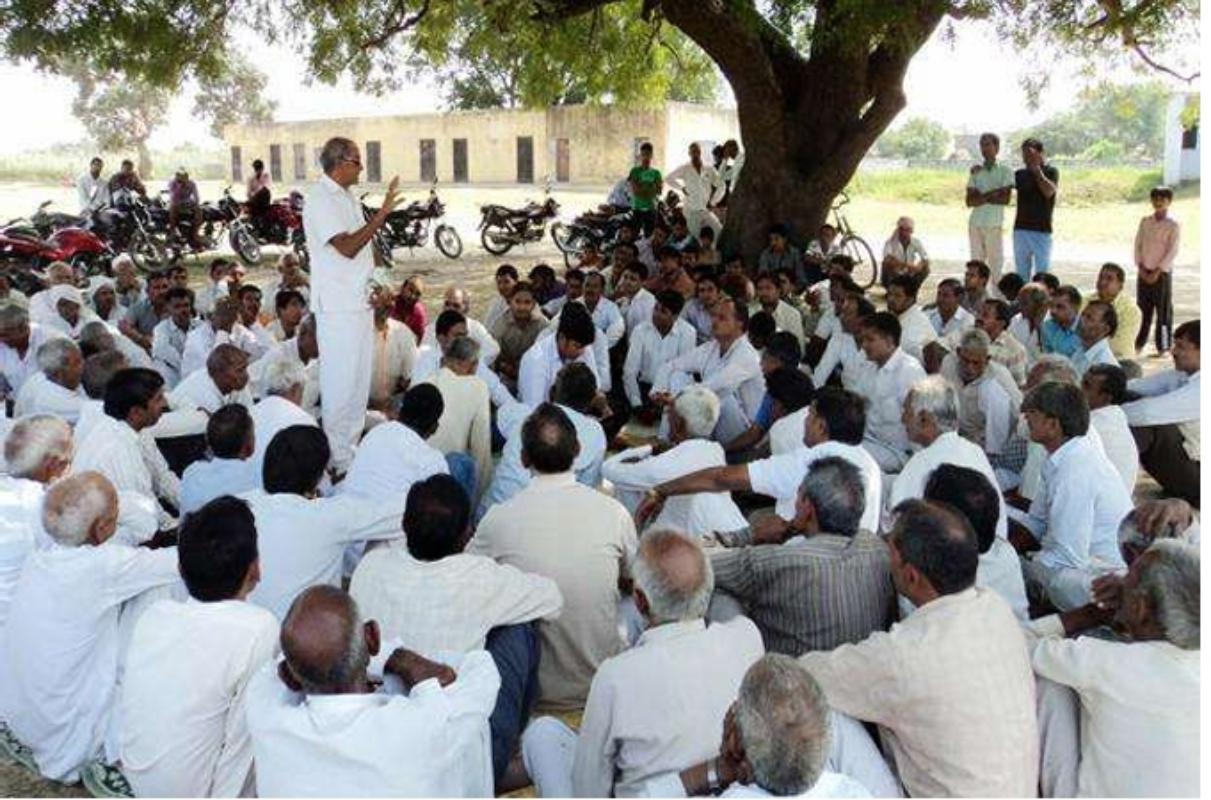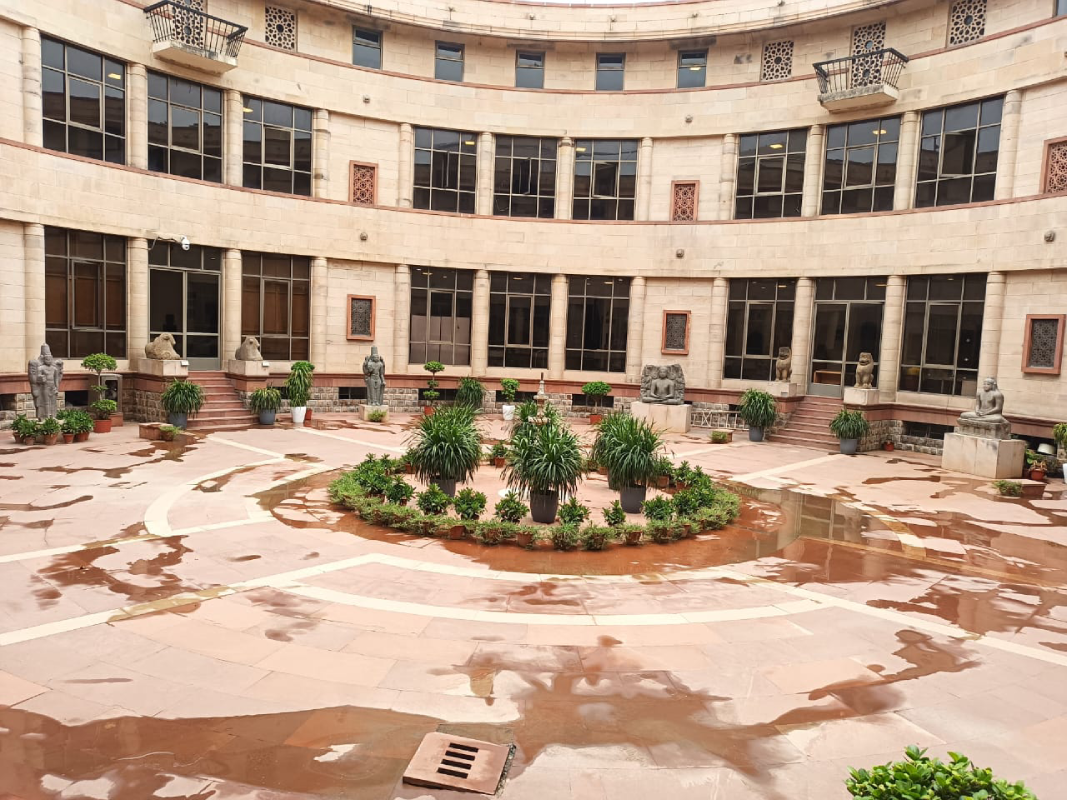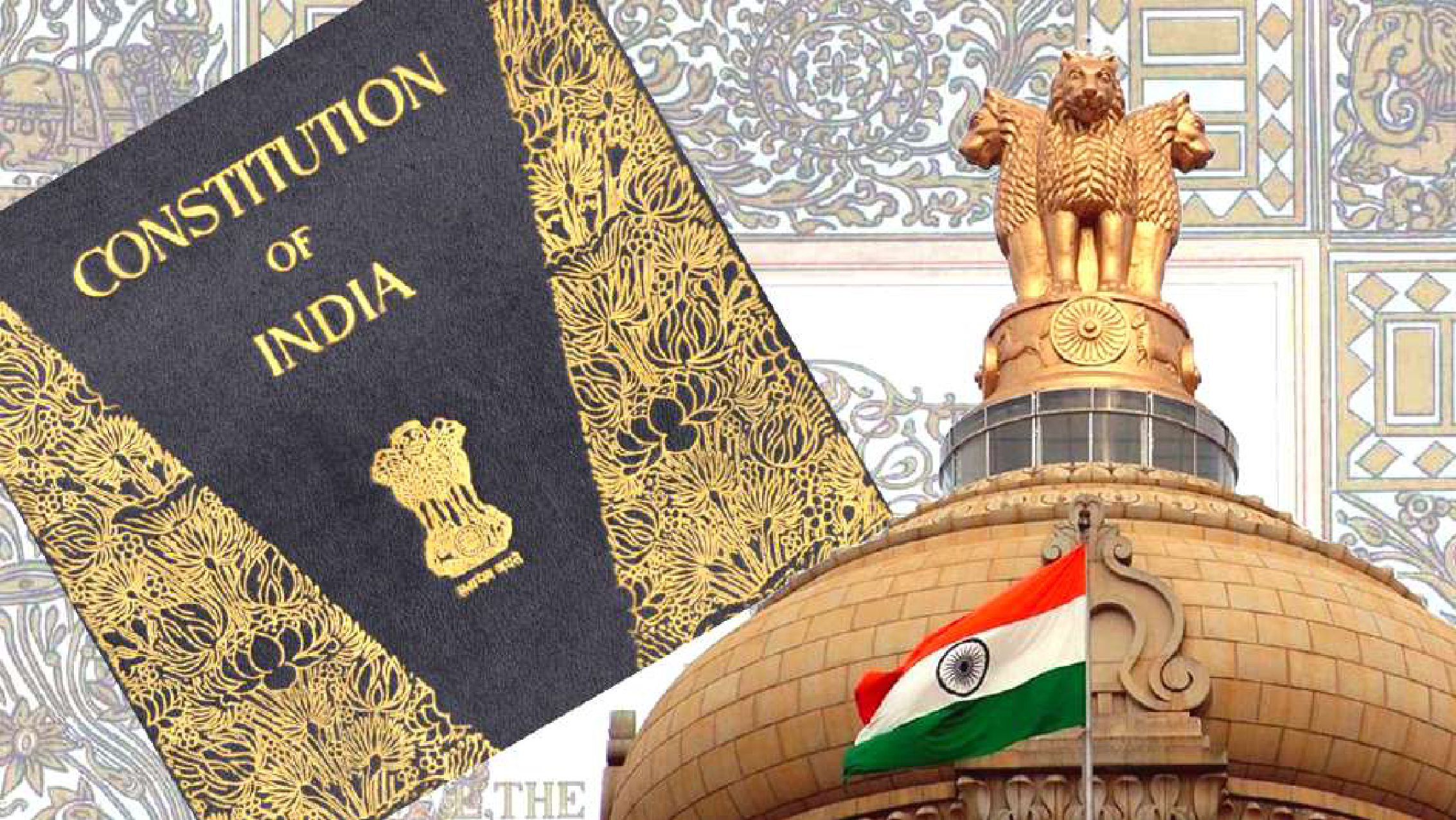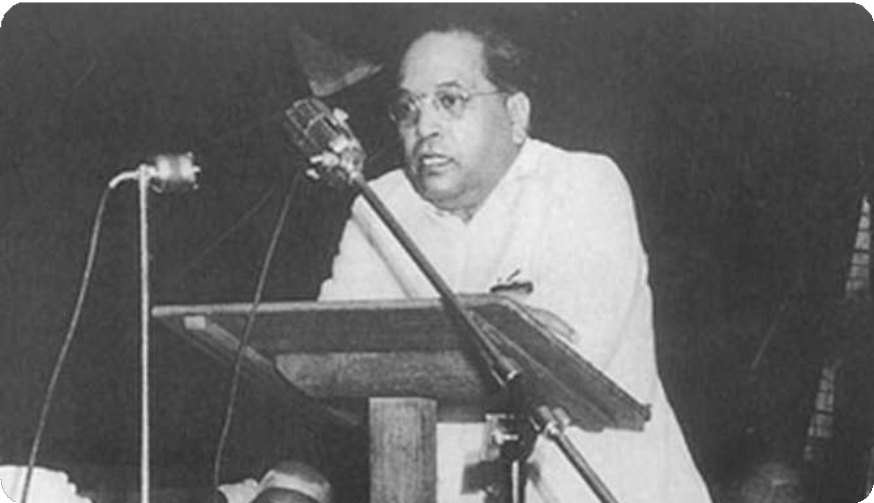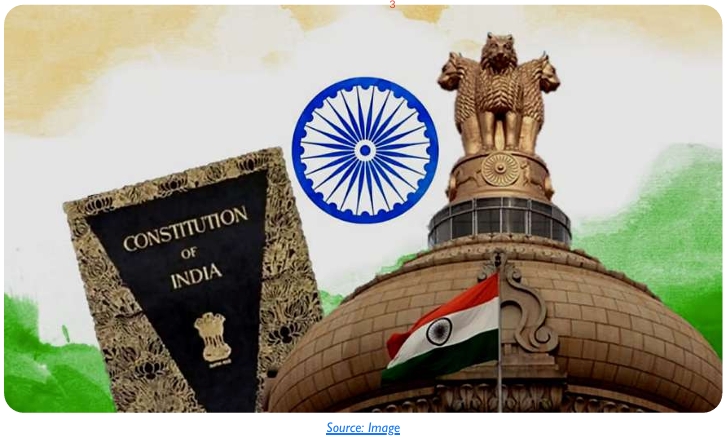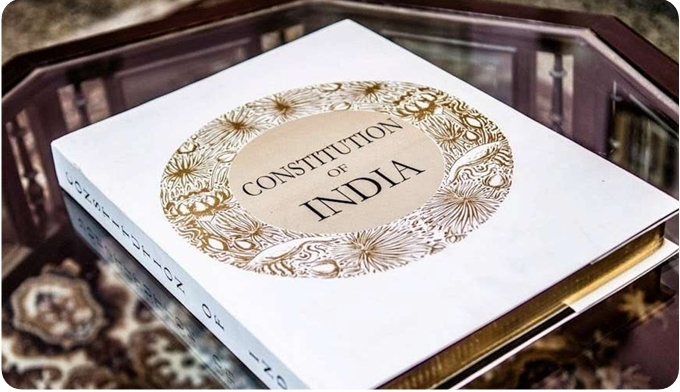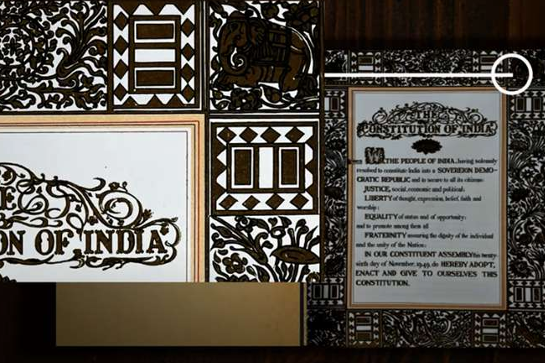To better appreciate the need and importance of decentralized governance as an idea and more specifically the vision behind 73rd Amendment, the Rajiv Gandhi Institute for Contemporary Studies (RGICS) launched a study in late 2020 to identify the key characteristics of well performing Gram Panchayats and help understand the correlation between good local governance principles and provision of useful services to the villagers.
Though the literature on this topic is extensive, much of it laments the lack of progress in achieving the vision of effective local self- government in rural India. The standard reasons given are the triple deficit of funds, functions and functionaries. To break away from this rut, we decided to look at some of the better performing panchayats and see what makes them so. For this, we decided to study 30 award winning panchayats – three each in ten states. A list of the panchayats, blocks, districts and states is given at the end of this note.
Some of the aspects attempted we studied were:
- Leadership: The attributes of the Sarpanch/Dy Sarpanch and ward members as publicspirited, forward thinking leaders. This was done by
i) Asking them how persistent problems were identified and resolved through the initiatives of the Panchayat. (Drainage, access road, drinking water provisioning etc.). Contrasting it against sticking to low-hanging fruits and predetermined “safe” projects.
ii) How did the Sarpanch/Dy Sarpanch anticipate problems of the near future and act upon it. (tree planting, waste management /garbage disposal)
iii) Were the Sarpanch/Dy Sarpanch self-starters – they were not merely following instructions/precedents but also initiating a new idea/solution. Were they able to predict problems or discover hidden problems and look for answers. This can include out of the box thinking.
iv) Sense of justice/equity: Were the Sarpanch/Dy Sarpanch aware of groups who are traditionally/historically excluded and takes proactive steps to include them in GP’s activities. Any specific initiative for gender equity.
v) Do the Sarpanch/Dy Sarpanch encourage participation/delegates responsibilities particularly to ward members for representing their specific problems and delivering specific services and share credit. Contrast it against tendencies to deify themselves as the saviour.
vi) Ability and readiness of the Sarpanch/Dy Sarpanch to institutionalise good leadership and governance practices. This included building leadership in youngsters, creating formal or informal systems for accountability and transparency, particularly of financial matters.
- Resource Mobilization Capacity: Besides securing established sources of funds (Finance commissions, other automatic state grants) did the Sarpanch/Dy Sarpanch identify discretionary sources and securing funds (MP/MLA LAD, CSR, Livelihood missions, new local revenue streams such as rentals, lease charges etc). In the process, do the Sarpanch/ Dy Sarpanch demonstrate lobbying/advocacy and networking capabilities.
- Strengthening democratic behaviour and practices: Efforts put in by the Sarpanch/Dy Sarpanch to ensure conduct of free and fair elections. The frequency and quality of meetings – both statutory (two Gram Sabhas etc) and purposive (to plan specific programs or regular review) as against a perfunctory ritualistic approach that is widespread. Attendance and people’s participation. Are the task-specific committees (education, water and sanitation, justice etc.) functional?
- Locational factors: Were there location specific advantages or challenges that stand out? Some of the possible ones are: proximity to cities
Field Visit Methodology:
Before going to the award winning GP, the team met the district level or block level officials and asked them to describe the unique features of the award winning GP and their understanding of why that GP was high-performing. The team, then visited the GP. After initial introductions, started by visiting or asking about with some visually impressive assets created by the GP. The team then continued with asking about other significant achievements of the GP, some of which are not tangible, such as improving education or health.
Where possible, the narration by the Sarpanch or other leaders/functionaries about the asset creation or scheme benefits was corroborated by speaking to general members of the village community, men and women.
The team then interviewed members of the marginalized/excluded communities – to explore the inequities that traditionally exist and explore how this GP made efforts to include them pro-actively. What has it meant to them economically and socially?
Then the team encouraged the Sarpanch talk about persistent problems. How did he/she discover the problem? Why did it bother him/her? What did he/she do to fix it? How much did it cost? Where did the funds come from?
This then led into their complaints about policies inadequacies/inconsistencies and/or a wishlist: What changes/reforms would they like from various tiers of government, from NGOs, CSRs and the villagers.
Where possible, the team asked questions on their future plans and why and how they expect it to be funded.
List of Gram Panchayats Included in the Study
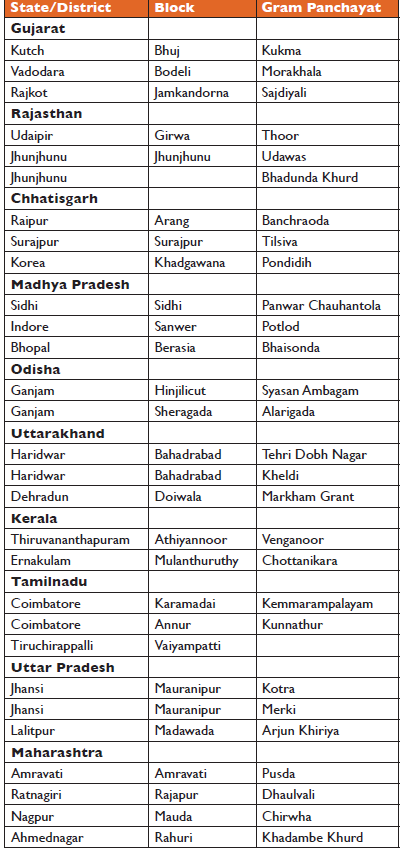
Case Study – Kukma Gram Panchayat. Block: Bhuj, District: Kutch
Kukma Gram Panchayat was one of 4 Gram Panchayats in Gujarat that was awarded Deen Dayal Upadhyay Gram Sashaktikaran Puraskar for the year 2019-20. This case study is a result of datagathered through a short visit to the village in February 2021. Budgetary information was obtainedfrom their filing of reports to the Ministry of Panchayati Raj, Government of India. Video documentation was done through interviews of key functionaries and visuals of physical assets created by the GP. Interactions with a larger village community was severely limited due to the prevailing COVID-19 restrictions.
Brief description of the Panchayat
The Kukma Gram Panchayat covers four villages: Kukma, Moti Reldi Nani Reldi and Ler. This cluster of villages is located 14 kilometres from the taluk headquarters of Bhuj. These villages are among the dozen villages along the Anjar-Bhuj Highway where the community of Gurjar Khsatriyas and Mistris settled about a 100 years ago. These villages were known for their unique architectural patterns popular with this community. Much of the buildings were destroyed in the earthquake that devastated the region in 2001. The reconstruction has been swift and today the village come across as very affluent and organized.
The village of Kukma is geographically the largest and most populous of the four and relatively more prosperous too. The other three villages are sparsely populated even though the geographic area of the three villages exceed 4200 hectares. The combined area of the four villages is 6103 hectares. The combined population is over 9000 (1950 households). Kukma population alone contributes 7400 (87% of the total). There are 1600 (320 households)persons from SC category and about 140 (30 households) belonging to ST.
There are an unknown number of households living in dwellings constructed on public land that was encroached.
These villages come under the program area of two well-known NGOs in Kutch – Kutch Mahila Vikas Sangh (KMVS) and SETU Abhiyan. Between these two NGOs, they have supported many institution building initiatives of the GP. While KVMS helped in the process of strengthening of various women’s collective in the village SETU Abhiyan helped the GP understand the provision of the Panchayati Raj Act and prepare to take on the governance responsibilities and assert the rights under the spirit of 73rd Amendment.
The Economy
The main village of Kukma has many features of an urban area: modern buildings, holiday resorts, large number of commercial establishments including industries and restaurants. It is estimated that many hundreds of residents of Kukma are employed in Bhuj but stay and commute from Kukma. Organized and unorganized non-farm income therefore contributes a significant share to the economy of Kukma and the three villages.
Observations on Governance of the GP
The sarpanch, Mrs Kankuben Amritlal Vanker was elected in January 2017. She was urged to run for the office by her fellow community members when the seat was declared as a reserved for SC. Prior to assuming this role, Kankuben was a ward member for in a previous term. She comes from the SC community who are engaged in weaving. She is an award winning artisan with one of her design called Toran Art winning the President’s National Award for Handloom Design in 2011. Her trip to Delhi to receive the award and the subsequent opportunity to start a handloom shop formed the foundation for the leadership role she would assume years later. She is a fierce advocate for girls’ education, having forced herself to drop out after seven years of schooling. Despite excelling in her academic performance, economic and social compulsions meant that she had abandon studies after 7th standard and join her parents in the traditional occupation of weavers. Not surprisingly she has ensured that GP allocated adequate funds and attention towards improving the opportunities for girls in the village.
There are 12 wards represented by 5 female and 7 male ward members. The ward members play a crucial role in ensuring transparency and accountability of the GP. The Panchayat meetings schedules are very strictly adhered to and registers very high attendance and participation levels.
The most significant evidence of participation is the evolution of the GPDP – Gram Panchayat Development Plan. It starts with ward level consultation and after it is aggregated at the GP level, it is thoroughly discussed in the gram sabha before getting approval. There are anecdotal instances that indicates that the contents of the GPDP are contested and resolved before it approved and sent to the district.
When asked about the reasons for winning the DDUGSP award the instantaneous response from the sarpanch and ward members were that the GP functioned in a democratic way and successful in achieving high levels of public participation in the governance of the GP. Of special significance was the concerted efforts put in by the panchayat members to identify the vulnerable, traditionally excluded and less visible segments of the population and organize purposive forums where these communities and interest groups could engage with the panchayat members and participate in the planning of development activities of the GP. This included the women, children, the marginalized among the scheduled caste and tribes and seniors. The sarpanch was specially focussed on ensuring that there is transparency in the functioning. “The more participatory we are the more problems we will come to know and therefore more issues can be resolved” said Kankuben.
To ensure that there are forums available to villagers and various interest groups to engage the GP has active committees for child welfare, domestic water management and social justice (for conflict resolution). These committees have regular meeting schedules and proceedings of each meeting is minutes recorded. They are also made available during the general body meetings for anyone scrutinize. The sarpanch believes that ever since these activities have been institutionalised, the villagers especially women, have confidence and that translates into better participation.
Another notable feature of the GP governance is the approach taken by the panchayat to liaise with various government departments to ensure that they are cooperative and responsive to the proposals for projects and application to avail services.
Financial resources (some more financial statements are awaited from Kukma)
The GP has been receiving grants-in-aid only from the Central finance commission and not the state Finance Commission. The total receipts for the year 2019-20 totalled Rs _____ lakhs. The approved GPDP showed a total planned investment of Rs ____ Lakhs. This includes Rs ____ from MNREGA. Besides these government grants and allocation Kukma GP has two other notable source of income: revenue collection from commercial/industrial units located in the GP jurisdiction and funds contributed by industries through their CSR program. These projects are implemented through NGOs and therefore not reflected in the book of accounts of the GP. To supplement their income, the GP has rented out shops in a market place.
Significant achievements during the year 2019-20:
- To ensure that anyone in distress situation (widows, seniors, disabled, people with chronic health issues etc) are able to avail welfare schemes from the government such as Ganga Swaroop Yojana, old age pension etc, the GP has formed a separate committee for overseeing the implementation. This approach to social welfare services has resulted in a very high degree of inclusion in delivering services in the villages. The GP has evolved a method for achieving this outcome. Instead of serving villagers as a response to a petition, the GP organizes regular camps with adequate publicity for specific interest group. During these camps not only are the panchayat members seeking out potential beneficiaries, but also making sure that representative of the relevant government agencies are also present so that all pre-requisites and documentations process is enabled quickly.
- The focus on women and girl-child has yielded very tangible outcomes. Economic and social empowerment of women, a quantum increase in opportunities for young girls to study and pursue extra-curricular activities, the increase in the sense of safety and confidence level are all notable since this Sarpanch and ward members came into the office. As an example, in acknowledging that single-mother families, have many economic and social challenges to deal with in rural areas, the GP has started paying for the education expenses of all girls from a widow-headed families. Girls from very low income families are also given full subsidy for their schooling expenses. For girls from other BPL families, the subsidy is 50%.
- The GP provides a very impactful oversight of the schools in the 4 villages. The outcome has been very measurable. The inhospitable conditions in the class rooms that existed prior to this panchayat have ended. Fans, drinking water and toilet facilities that were unusable were fixed. Teachers are now better supervised and feel more accountable to the parents.
- To motivate girls to achieve academic excellence the GP has started a practice of naming internal roads to honour high performing girls from the village.
- The cleaning up of the village pond is an example collective action fostered by the GP. The pond was used as a dumping ground for household waste. Besides, the tank was also the dumping ground for flowers and other props used during festivals like Ganapati visarjan or navratri puja. The tank that provided the only drinking water source not so long ago, was turning into a health hazard. Driven by Kankuben’s perseverance, the GP experimented with various incentive systems, reward and punishments, appeals and even vigilantism. When none of them worked, the GP decided to dig a separate pit with water in it that was exclusively meant for receiving residual material from religious events. The GP then instituted a monthly Tank-clean-up day where villagers would volunteer their time to remove the accumulated dirt and dispose them safely.

- Illicit liquor, alcoholism, gambling and sexual harassment of women emerged as a serious issue during the early rounds consultation of the villagers in 2017. To resolve these inter-related problems and to improve safety of women and children the GP installed CCTV cameras and monitoring stations. The villagers were given helpline/toll free numbers to report any of these incidences. The CCTV monitoring and the reporting system combined well to deter the bootleggers gamblers and delinquent youths from indulging in any misdemeanours. This was one of the earliest women-led development outcomes that served as a morale booster for many more safety and livelihood related imitative by women.
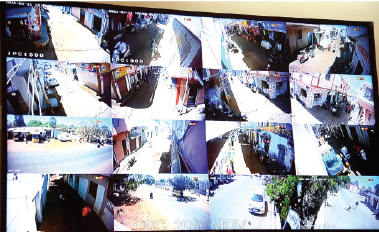
- After having experienced severe water shortages during the drought like conditions in 2016- 17 the GP invited an NGO called ACT to help prepare a water resource development and management plan for Kukma GP. The process included identifying 4 volunteers from the village who would be trained by ACT to do mapping of all water sources. To the surprise of ACT, 2 of the 4 volunteers were young women. The exercise resulted in a comprehensive action plan that they now refer to every time the GPDP process takes place. Over the next few years the GP undertook water harvesting and groundwater recharging structures. With additional help from another NGO called VRTI more such structures were constructed.
- With the help of CSR funds from Agrocil Pvt Ltd and technical support from VRTI the GP has constructed a water reclamation plant that recycles wastewater and reuses it for irrigating many community gardens that the GP developed on wastelands and commons. The recycle water is currently raising more than 7000 timber and fruit trees.
Challenges/work to be done:
There are many infrastructure projects that require urgent attention. This includes major road repairs, school buildings and health centres. The proposal for these works are held up at the respective government department offices. The GP would like to play a more direct role in implementation. When an active GP is able to put together a truly bottom-up plan it becomes imperative that the plan is executed efficiently. However since some of the works are implemented outside of the GP they have very little means to hold the departments accountable. When important activities are either delayed or not done at all, it undermines the peoples’ participation. In Kukma’s case various MNREGA works and a WASMO drinking water project was given high priority in their GPDP, but protracted delays and hurdles from the respective departments have upset the villagers and the GP.
Another administrative constraint that the GP faces regularly is the frequent transfer of the village secretary (Talati). Given the critical role they play frequent and sudden changes is very disruptive and has consistently been a cause for grief.
Conclusion:
Kukma GP is one of the most commended local government cases not only in Kutch and Gujarat but perhaps in the country. There are many contributing factors that made this possible. A big one if not the decisive one is the role played by two NGOs – KMVS and SETU Abhiyan. The focus of these two NGOs’ intervention in this village was to build the capacity of the GP to function as a vibrant inclusive and democratic local government. Since KMVS also had an added thrust on empowering women’s role in governance and economic activities, these opportunities converged very well when Kankuben was elected the Sarpanch. Besides these two NGOs another two NGOs provided technical support to the GP in implementing some of the infrastructure projects and also accessing funds from multiple CSR sources.
While these NGOs have certainly influenced the way the GP has functioned and in strengthening the skills and awareness of the panchayat leadership, this will not take anything away from the role played by Kankuben as a transformative leader of the GP. Her leadership style could be described as a mix of transformational, coaching and democratic. This has perhaps played, in no small way, an important part in enhancing the participatory ethos that prevails in the GP today. She engages with ward members, government officers and visitors alike – with humility.
The explicit and vocal emphasis on inclusive development approach is certainly tied to the fact that the sarpanch comes from a less-privileged segment of the community and yet is assertive as a strong champion for the underprivileged and the vulnerable. It is also markedly influenced by the support she received from the two NGOs. However, there is a much higher than average probability that these progressive governing systems will endure beyond the current tenure of the Panchayat because much the progressive elements of governance has been institutionalized in a manner that its efficacy is delinked from the sarpanch’s personal involvement. The continued presence of the two NGOs playing a watchdog role may also improve the chances that the good governance practices will endure.
The case-study team has not heard any sarpanchs or other panchayat functionaries articulate the dissonance between the spirit of 73rd Amendment and the reality as well as Kankuben could. She illustrated the point by explaining how the amount and conditions attached to the grants-in-aid given to the GP is inadequate and constraining. Despite having demonstrated their ability to plan and execute work in a transparent and time-bound manner, any activity that requires larger budget provisions are designed and implemented by government departments with minimal engagement of the GP.

